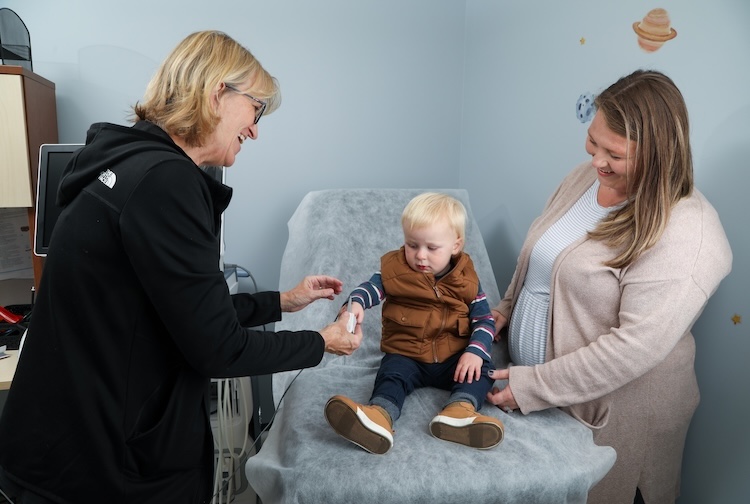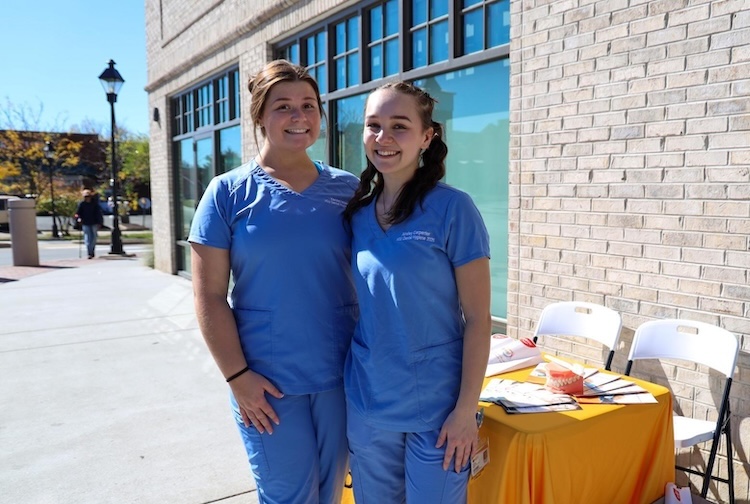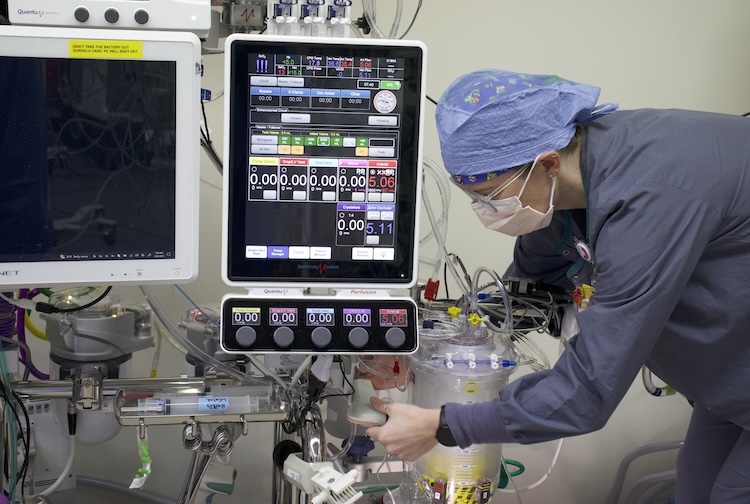New study reveals unique long COVID symptoms for young children – what parents need to know
VCU researchers help develop resources to help families and health care providers spot subtle signs of long COVID in infants, toddlers and preschool-aged children.
June 23, 2025 VCU School of Nursing is involved in a nationwide initiative to better understand the impacts of long COVID in infants, children and young adults. (Caitlin Hanbury, VCU School of Nursing)
VCU School of Nursing is involved in a nationwide initiative to better understand the impacts of long COVID in infants, children and young adults. (Caitlin Hanbury, VCU School of Nursing)
By Caitlin Hanbury
Hearing the cries of an infant is stressful, especially when you know they’re sick. But what if your precious little one continues to have lingering symptoms and it’s not clear what they’re from?
When it comes to COVID-19, researchers are finding new signs of prolonged symptoms in different age groups, specifically young children. Because these signs often resemble typical developmental milestones or minor childhood illnesses, families and even clinicians may not immediately connect them to a previous COVID-19 infection. And to make it even more difficult to diagnose, the symptoms are different among infants, toddlers and preschool-aged children.
Two researchers looking deeper at these issues are Virginia Commonwealth University School of Nursing’s Amy Salisbury, Ph.D., professor and associate dean of research, along with Patricia Kinser, Ph.D., professor and dean of the school, who are part of the Researching COVID to Enhance Recovery (RECOVER) initiative, a nationwide project funded by the National Institutes of Health to better understand how long COVID affects children, teens and young adults. They contributed to a recently publish study in the Journal of the American Medical Association that reveals new symptoms for young children, such as trouble sleeping, fussiness, poor appetite, dry cough and low energy.
Salisbury and Kinser spoke with us about what these findings mean for children’s health, why age-specific symptom tracking matters and how they hope these tools will support early recognition and care.
How do long COVID symptoms in infants and toddlers differ from those in preschool-aged children?
Salisbury: Changes in sleep patterns and cough were common across both age groups in children with an infection just before symptoms started. However, infants younger than 3 were more likely to have poor appetite and stuffy nose and trouble sleeping, while parents of children 3 to 5 years old more often reported low energy, daytime sleepiness or tiredness. This difference may be due to physiological differences between these age groups, but it may also be due to the more limited language capabilities below age 3, so parents may have to rely more on observable signs or behaviors when detecting a problem rather than reports from the child.
Why is it important to recognize these patterns for age-specific long COVID symptoms?
Salisbury: Understanding these differences can help clinicians know what to look for when faced with parent or child complaints of prolonged or ongoing signs and symptoms in children after being sick with COIVD-19 that might otherwise be dismissed.
How does this new list of symptoms help doctors and researchers better diagnose and study long COVID in young children?
Salisbury: Many of these signs are often reported in conjunction with other illnesses and may be dismissed as short-term or overlooked. Knowing which persistent signs and symptoms are most typical in young children with long COVID can help clinicians to ask more targeted questions about the timing and persistence of a child’s symptoms to consider a long COVID diagnosis.
In what ways could misinterpreting prolonged symptoms like fussiness or tiredness delay appropriate care for young children recovering from COVID-19?
Salisbury: These types of signs or symptoms may be attributed to a short-term viral illness or transient developmental patterns. Identifying that long COVID could be the cause of the symptoms would allow for appropriate supportive treatments.
Why is it important to understand how long COVID symptoms might affect a young child’s development and everyday behavior?
Kinser: Long COVID symptoms may affect the way children play or interact with others. They may also impact their ability to engage in schoolwork or other developmentally supportive activities, such as athletics. Understanding a child’s symptoms will allow parents, health care providers and schools to consider appropriate support and interventions moving forward.
What resources are being developed to help families and pediatric care providers recognize long COVID symptoms?
Salisbury: To support earlier recognition and care, the RECOVER team created a plain-language webpage to help families, caregivers and pediatric care providers identify potential signs of long COVID that might otherwise go unrecognized or underdiagnosed.
One-page summaries help to show state-of-the-art research findings in an easy-to-read format. This enables families, clinicians and the general public to see the broader body of work at a glance. This resource also includes all age groups involved in the NIH RECOVER pediatric study, providing a list of symptoms most common at each age and guidance on identifying and treating long COVID in children.
How can caregivers use this information to tell the differences between typical developmental behavior and potential long COVID symptoms?
Kinser: Parents can use the summary document to actively track their child’s symptoms and feel more prepared to discuss them with their pediatric care providers, who can best help parents distinguish between typical developmental, behavioral and potential long COVID symptoms.
Additionally, parents may want to consult with their child’s school to determine if the symptoms could impact educational plans.
Read more about the families who joined the VCU project to study long COVID in children




